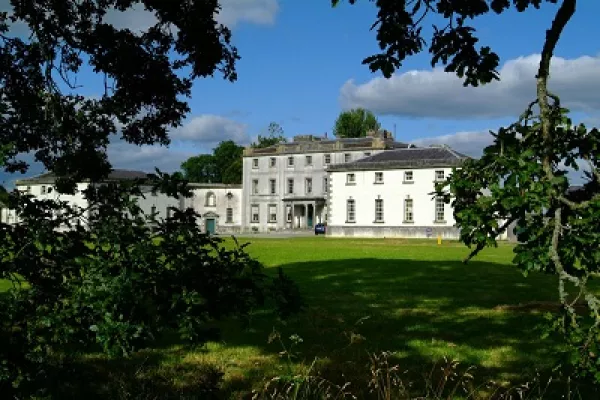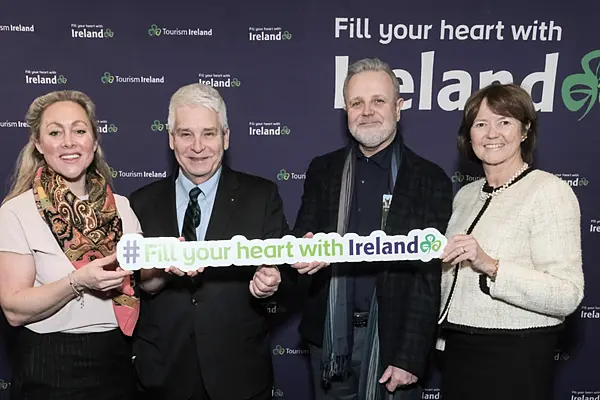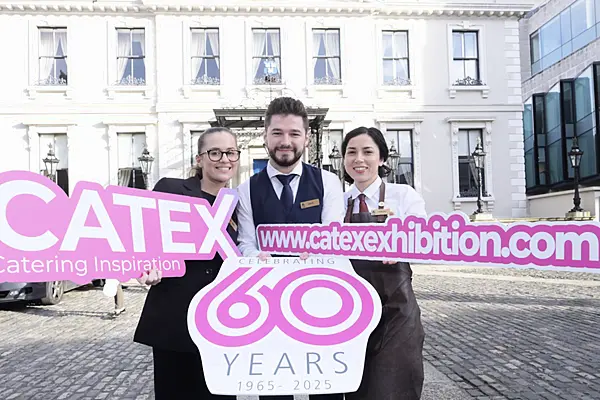Roscommon is home to ancient castles, Norman structures, and monastic ruins.
It has beautiful wild scenery and some of the most spectacular lakes in the country.
With all these factors in mind, Hospitality Ireland decided to examine the top ten visitor attractions in Mayo, based on Fáilte Ireland's Visitor Attractions Survey 2022.
1. Strokestown Park House, Famine Museum And Walled Gardens
(34,772)
Strokestown Park House gives visitors a sense of what life was like in a Irish country house of centuries past, for gentry and servants alike.
The mansion features original collections of art, curios, and everyday objects set across grand rooms and servants’ quarters. The Victorian walled gardens offer a variety of outdoor spaces, from formal pleasure gardens and fruit-and-vegetable gardens to Strokestown Park’s wilder woodlands.
The National Famine Museum features simple everyday objects, from farming tools to worn-out shoes, giving an indication of the lived experience of famine at different levels of Irish society.
2. Rathcroghan Visitor Centre
(26, 500)
Rathcroghan, in the medieval village of Tulsk, is the oldest and largest unexcavated royal site in Ireland. The visitor centre offers literature about the ancient royal site of Connacht.
Those attending can learn how their Iron Age and medieval ancestors lived, through interactive exhibits and audio-visual presentations. Rathcroghan Visitor Centre is home to Óenach Cruachain, a collection of 35 artefacts discovered within the Roscommon landscape that previously resided in the National Museum of Ireland and were not accessible for public viewing.
Visitors will also find a replica of the Gortnacrannagh Idol standing in the Ogulla River, as it runs by the Rathcroghan Visitor Centre. The original pre-Christian wooden idol was discovered during excavations at nearby Gortnacrannagh and provides important insights into the beliefs and practices of the late Iron Age.
3. Glendeer Pet Farm
(26,000)
Located eight kilometres west of Athlone, in Co. Westmeath, Glendeer Pet Farm is an interactive experience, wherein visitors can see, feed and pet animals such as deer, pot-bellied pigs, llamas, emus, ostriches, goats, donkeys, sheep, monkeys, wallabies and tortoises.
The farm features playgrounds, a fairy trail, a traditional farm cottage, and lots more.
4. Arigna Mining Experience
(21,322)
The Arigna Mining Experience is the country’s first coal-mining museum, documenting Ireland’s first and last coal mines. Visitors can take a guided tour underground with a former coal miner, who brings the history of the coal mine and previous iron mine to life.
An exhibition area includes historical documents, photographs, and early mining equipment, tracing 400 years of mining history in the area. A short film features original mining footage, recorded just weeks before the closure of the mines.
5. Shannonbridge Fort
(15,500)
The Shannonbridge fortifications were Napoleonic fortifications that were built by the British military and date from 1810. The structure protected the bridge against a French invasion from the west.
In military terms, the fortifications at Shannonbridge are known as a tête de pont, which means ‘bridgehead defence’. They have been described as one of the best examples of Napoleonic fortifications in the British Isles.
There is a free exhibition in the main building, giving visitors an insight into why these Napoleonic fortifications were built along the River Shannon. Visitors can also follow the self-guided walk around the fort.
The River Café has seating outside, overlooking the River Shannon, and the gift shop stocks a selection of Irish crafts, books and jewellery.
6. King House
(13,026)
King House, in Boyle, was originally built in 1720, as the main residence of the powerful King family – the house later became a military barracks to the Connaught Rangers. It is a classical townhouse that represents the period of Irish history known as the Ascendancy.
The house spans four floors, and the original architectural elements have been sensitively restored throughout the property. Exhibitions at King House recount eventful periods in Irish history. The Gaelic Ireland display looks at medieval Ireland, just before the King family arrived in Boyle, and the ‘Creation of a Nation’ exhibition explores the role that King House and Boyle played in the early 1900s, during the struggle for Irish independence.
King House also displays the McAleese Collection and the Boyle Civic Art Collection, along with an exhibition dedicated to Boyle’s own Maureen O’Sullivan, who was born just yards from King House.
7. Boyle Abbey
(6,425)
Boyle Abbey was the first Cistercian monastery to be successfully founded in the province of Connacht. It is situated in the town of Boyle and was founded in the twelfth century.
In 1161, the Cistercian monks established the abbey at Boyle after three unsuccessful attempts to settle in the province of Connacht. The monastery, which was completed around 1220, was laid out according to the usual Cistercian plan. It had a church on the north side of a rectangular cloistered area, with a chapter house for meetings on the second side, a kitchen and refectory on the third, and storehouses and a dormitory likely on the fourth.
Today, only small parts of the cloister remain, as the Elizabethans converted it into barracks in 1592 and the Cromwellians besieged it in 1645.
8. Derryglad Folk And Heritage Museum
(3,000)
Derryglad Folk and Heritage Museum allows visitors to experience life in rural nineteenth-century Ireland. It takes visitors on a trip of 250 years of Irish rural life, through village shops to the school room and kitchen, where they can hear the stories and traditions of long ago. Visitors can examine the butter churns and other artefacts in the dairy and see old tractor ploughs and other farm machinery elsewhere.
The collection of 8,000 objects features sporting memorabilia, including historic items from Croke Park.
9. Dr. Douglas Hyde Interpretative Centre
(3,000)
Douglas Hyde was the first President of Ireland and co-founder of Conradh Na Gaeilge (the Gaelic League).
The interpretative exhibition and information centre is dedicated to Hyde and is housed in the church, where his father was rector, in Frenchpark.
Hyde published many works under the pen name An Craoibhin Aoibhinn, and his contribution to Ireland is traced through informative charts, books of his poems and prose, personal items, letters, maps, and photographs. The churchyard contains the remains of the late Hyde and other members of his family.
10. Roscommon Country Museum
(1,180)
Roscommon County Museum displays a range of items relating to the history of Roscommon. These include a 9th-century inscribed slab from St. Coman's Foundation, a replica of the Cross of Cong with an inscription that states it was 'made in Roscommon.'
The museum is housed in what was formerly a Presbyterian church built in the 1860s. A collection of horse-drawn farm machinery is also displayed in a yard behind the museum.








